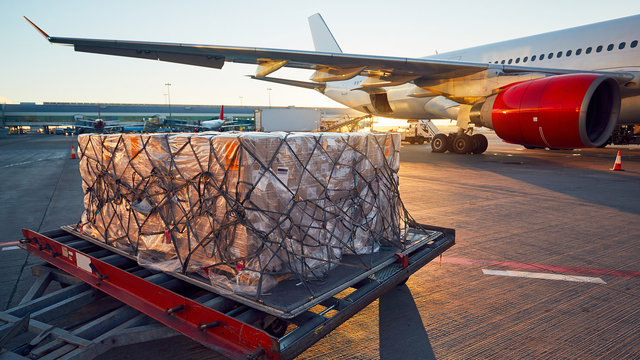
January 17, 2023
Pros & Cons of Air Freight: Cost, Speed, Shipment Visibility and More
Our transportation mode comparison series continues with Part III: a deep dive into all things air freight, including shipping cost, environmental impact and reliability. Is shipping by air the right shipping mode for your freight? Keep reading to find out. Don't miss the printable infographic and video.

Shipping by Plane
Shipping by plane. It’s fast, easy to track and is accessible to just about any location with an airport nearby – but it comes with a high price tag. Is it right for you?
PROS:
- Fastest shipping mode, especially for long distances
- Accessible to most locations and doesn’t require infrastructure like trucks and railroads
- Allows you to place orders on demand, reducing lead time, inventory and storage costs
- Easy to track your shipment while in transit
CONS:
- Typically the most expensive shipping mode
- Easily impacted by inclement weather and susceptible to delays
- Low carrying capacity
- No door-to-door capability
- Airport infrastructure required
- Not as environmentally responsible as other shipping modes
Shipping Cost
The biggest drawback for shipping by air is the cost. Air freight can cost up to 20 times the cost of other modes. Key cost drivers include the plane’s jet fuel, maintenance, labor and landing fees – adding up to one hefty price tag that typically makes it the most expensive shipping mode.
Speed
While road transport may be the quickest way to deliver goods short distances, air transportation is the fastest option for freight traveling long distances — especially for perishable goods, like flowers, food and pharmaceuticals. Transit time is typically between 24 and 48 hours. Automotive and retail industries also utilize air freight to achieve “just-in-time” (JIT) inventory replenishment. JIT allows you to place orders based on demand, providing more flexibility and reducing inventory and storage costs.
Cargo Capacity
When you ship by air, you will have to meet size and weight requirements since planes usually have less cargo space than other modes. If you are looking to ship bulk, oversized and/or very heavy items, shipping by plane may not be the best choice for you.
Reach
Shipping by plane allows you to reach just about any location on the globe as long as there is an airport nearby. Plus, planes fly freely, so there is no obstruction of land, mountains, water, etc. to hinder the movement of your shipment. However, once your shipment arrives at the airport, you most likely will need to coordinate a pickup by truck to get your goods to their final destination.
Shipment Visibility
Tracking air freight is typically an easy thing to do. Most carriers will notify you at its point of departure and arrival at the destination airport.
Reliability
While airplanes are speedy and keep fairly frequent schedules, they can easily be affected by any type of inclement weather, computer glitches and traffic congestion. Keep in mind that even short delays can turn into a big headache if you are relying on air to get your shipment delivered by a certain date and time.
Environmental Impact
Planes are one of the most fuel-intensive transportation modes, which means emissions are significantly higher in air freight transport compared to truck, rail and water.
Do you have questions about shipping your freight? Answer a few quick questions and an expert will be in touch.
Related Articles: